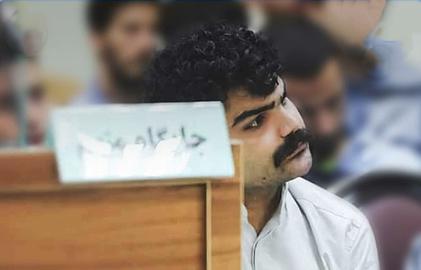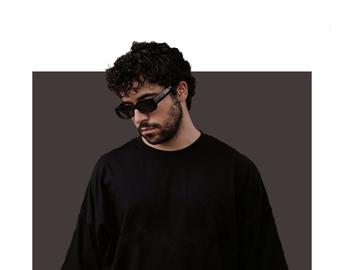As Iranians get ready to celebrate Norooz on March 20, many non-Iranians will look on in bewilderment at the range of complex rituals, symbols, jargon and events with which Iranians mark the “New Day,” or Persian New Year. Luckily for them, IranWire has prepared this handy guide to history, controversy, and custom.
Norooz is one of the oldest celebrations in the world.
Norooz, which literally means “New Day,” dates back over 3000 years, and has its origins in the ancient Iranian religion of Zoroastrianism, an early form of monotheism that is believed to have influenced the development of Judaism, Christianity and Islam. Iran’s later Achaemenid rulers -- probably successors of the emperor Darius, who ruled from 550-486 BCE -- adopted Zoroastrianism as a state religion, and with it its 365-day calendar. The Achaemenids were the first rulers to build an empire though much of what we now think of as the “Persianate” world, though the spread of Norooz from the Black Sea to Central Asia owes much to successive Persian Empires as well. Although around 45,000 Zoroastrians still live in Iran, Norooz is a now secular holiday.
Norooz has more than twenty different spellings.
Norooz is traditionally celebrated in about a dozen countries that came under Persian influence or rule at some point in their history, and is also recognized by large countries such as India and China, which are home to minorities from Persianate cultures. The spread of Norooz across cultures, along with controversy over how to transliterate the Persian alphabet, means that Norooz now has many, many names. According to Wikipedia, popular variations within the Roman alphabet alone include Norooz, Nourooz, Nouruz, Norouz, Navrooz, Narooz, Nauruz, Nawroz, Noruz, Nohrooz, Novruz, Nauroz, Navroz, Naw-Rúz, Nowroj, Navroj, Nevruz, Newroz, Navruz, Navrez, Nooruz, Nauryz, and Nowrouz. Take your pick!
Iranian authorities aren’t wild about Chaharshanbeh Suri.
Every year before Norooz, on the eve of the last Wednesday of the year, Iranians kick off celebrations with Chaharshanbeh Suri, or “Wednesday Light.” Like Norooz, Chaharshanbeh Suri is a pre-Islamic festival rooted in Iran’s ancient Zoroastrian religion. Iranians celebrate fire as a force for purification and renewal by jumping over bonfires to cleanse themselves of ill health and bad luck. Conservative clerics tried to ban the festival after the 1979 Islamic Revolution, and still disapprove of it. One ayatollah, Makarem Shirazi, has called it “the festivity of the ignorant and the superstitious” because of its pagan resonances. Police and emergency services, meanwhile, oppose it on safety grounds, since people injure themselves jumping over fires and letting off fireworks every year. This year, Iran’s emergency services reported 2500 injuries and three deaths.
Setting up a “haft sin” is a good way to learn some Persian.
A few weeks before Norooz, Iranians begin setting up their haft sin, or “seven Ss,” a ceremonial display of symbolic items whose names begin with the Persian letter “sin” or “s.” They include “sabzeh,” or green sprouts grown from lentils, which symbolize rebirth; “samanu,” a sweet pudding that represents affluence, “senjed,” or dried wild olives, which symbolize love; “seer,” or garlic, which symbolizes medicine; “seeb,” an apple, which represents health; “somaq” or sumac fruit, which symbolizes the color of sunrise, and “serkeh,” or vinegar, which symbolizes maturity. Sometimes other S’s, such as “sekkeh,” or coins, are substituted. Other common features include a goldfish in a bowl (see below), and a copy of the Koran or the poetry of Hafiz, which people use -- at the exact moment the year changes -- to read omens for the future.
Some countries have tried to suppress Norooz.
The Soviet Union, which encompassed such Norooz-celebrating countries as Azerbaijan, Turkmenistan, Tajikistan, Uzbekistan, Kyrgyzstan and Kazakhstan, wasn’t keen on Norooz celebrations, and didn’t mark Norooz officially. In Persian-speaking Tajikistan, authorities banned Norooz for a time under the mistaken assumption that it was an Islamic religious holiday, and a threat to Marxist-Leninist ideology. The same was true in Kazakhstan. But following the collapse of he Soviet Union in 1992, Norooz experienced a revival in the post-Soviet states, and Russia, too, now officially recognizes it. In Afghanistan, by contrast, the Taliban suppressed Norooz on the grounds that it was un-Islamic.
US presidents use Norooz to do public relations in Iran.
Shortly after US President Barack Obama came into office in 2009, he recorded a now-famous Norooz greeting in which he addressed “the people and leaders of Iran,” flattered Iranian culture, praised the accomplishments of Iranian-Americans, and even tried to speak a little Persian. He also raised the curtain on his “commitment to diplomacy” with Iran’s government. Now that Obama’s nuclear deal with Iran has been implemented, he is sure to champion the success of that diplomacy in this year’s message. But Obama wasn’t the first US president to issue such a greeting; the White House began sending out Norooz messages in 1992 under President George H.W. Bush. Bill Clinton, George W. Bush, and Obama have entrenched the tradition, and made Norooz a political occasion for Iran-watchers. Update: President Trump did not host a Norooz event, though he did send a message.
Norooz is a rough time for goldfish.
Every year, millions of Iranians buy live goldfish to display in bowls on their festive haft-sin tables. The fish are said to symbolize life, and it’s not hard to see why: if well cared for, they can live for up to 30 years. But in Iran, most merchants keep the fish under such bad conditions that they are in poor health by the time they reach people’s homes. Most die when they are isolated in small bowls that lack adequate filtration, and which may be exposed to direct sunlight, noise and vibration. That’s why this year, some young Iranians have launched an awareness campaign, asking people to buy a classic of Iranian children’s literature, The Little Black Fish, and put that in their bowls instead.
Norooz ends with an epic picnic.
Nowruz isn’t over until Iranians “get rid of thirteen” on the 13th day of Norooz, or Sizdah Bedar. To wrap up festivities, Iranians -- who are world-famous picnickers to begin with -- take to whatever parks, green spaces and wilderness locations they can find, and bring a great feast with them. The day is an official environmental holiday known as “Nature Day” in Iran, although whether nature really gets a holiday is debatable; many Iranians complain about the litter their countrymen leave behind. In any case, Sizdah Bedar is supposed to be an opportunity to rid oneself of all things unhappy, as symbolized by the throwing away of the “sabzeh” they have grown from lentils on their haft sin tables. Unmarried women will often tie the sabzeh in a knot, symbolizing their wish for union with a future husband, and throw it into running water.
This article was originally published in March 2016.
visit the accountability section
In this section of Iran Wire, you can contact the officials and launch your campaign for various problems



























comments